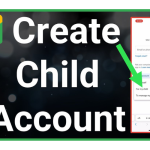Facebook advertising has become an essential tool for businesses looking to reach a vast and targeted audience. With over 2.8 billion monthly active users, Facebook provides a unique platform for businesses to promote their products and services. However, successful advertising on Facebook requires more than just creating an ad. It involves understanding the platform, defining clear objectives, knowing your audience, and continuously optimizing your strategy. This comprehensive guide will provide you with essential tips to optimize your Facebook advertising efforts and achieve your marketing goals.
Understanding Facebook Advertising
Before diving into specific tips, it’s important to understand the basics of Facebook advertising. Facebook ads can appear in users’ news feeds, on Instagram, Messenger, and the Audience Network. Advertisers can choose from various ad formats, targeting options, and bidding strategies to reach their desired audience effectively.
Ad Formats

- Image Ads: Simple and effective, these ads use a single image to capture attention.
- Video Ads: These ads use video content to engage viewers and convey messages more dynamically.
- Carousel Ads: Allowing multiple images or videos in a single ad, carousel ads are great for showcasing products or telling a story.
- Collection Ads: These ads include a cover image or video followed by several product images, perfect for mobile shopping experiences.
- Slideshow Ads: Lightweight video ads made from a series of still images, text, or video clips.
- Lead Ads: These ads include forms for collecting user information without leaving Facebook.
- Dynamic Ads: Automatically promote relevant products to users who have shown interest on your website or app.
- Messenger Ads: Ads that appear in Facebook Messenger, allowing direct interaction with users.
Targeting Options

Facebook’s advanced targeting capabilities are one of its strongest features:
- Demographics: Age, gender, education, job title, etc.
- Location: Country, state, city, or even a specific radius.
- Interests: Based on user likes, interests, and activities.
- Behavior: Purchase behavior, device usage, travel patterns, etc.
- Custom Audiences: Target users based on your own data, such as email lists.
- Lookalike Audiences: Reach new people who are similar to your existing customers.
Bidding Strategies

Facebook offers various bidding strategies to optimize your ad spend:
- Cost per Click (CPC): Pay each time someone clicks on your ad.
- Cost per Thousand Impressions (CPM): Pay for every 1,000 impressions.
- Cost per Action (CPA): Pay when a specific action is taken, like a purchase or sign-up.
- Cost per Like (CPL): Pay each time your ad gets a like.
- Bid Cap: Set a maximum bid for your ads.
- Target Cost: Aim for an average cost per result over time.
Tips for Effective Facebook Advertising

1. Define Clear Objectives
Before creating your ad, define what you want to achieve. Facebook offers various campaign objectives such as brand awareness, traffic, engagement, app installs, video views, lead generation, and conversions. Selecting the right objective ensures your ad is optimized for your specific goal.
2. Know Your Audience
Understanding your audience is key to creating relevant and engaging ads. Use Facebook’s Audience Insights tool to gather data on your target demographics, interests, and behaviors. Create detailed buyer personas to guide your ad creation and targeting strategies.
3. Create Compelling Ad Copy and Visuals
Your ad’s success heavily relies on its content. Follow these tips for creating compelling ad copy and visuals:

- Ad Copy: Keep it concise and focused. Use a strong headline, clear value proposition, and a compelling call-to-action (CTA). Highlight benefits over features and use persuasive language.
- Visuals: Use high-quality images or videos that capture attention. Ensure your visuals align with your brand and message. Test different formats to see what resonates with your audience.
4. Utilize Facebook’s Creative Tools
Facebook offers various creative tools to enhance your ads:
- Facebook Ad Library: View competitors’ ads for inspiration and to understand industry trends.
- Creative Hub: Design, mockup, and preview your ads before launching.
- Video Creation Kit: Easily create engaging video ads from existing images and text.
5. Leverage Facebook Pixel
Install the Facebook Pixel on your website to track conversions, optimize your ads, and build custom audiences. The Pixel helps you measure the effectiveness of your ads by understanding the actions people take on your website.
6. A/B Test Your Ads
A/B testing (split testing) involves running multiple versions of an ad to see which performs better. Test different headlines, images, ad copy, CTAs, and targeting options. Continuously analyze the results and optimize your ads based on performance data.
7. Optimize for Mobile
With a significant portion of Facebook users accessing the platform via mobile devices, ensure your ads are mobile-friendly. Use vertical or square formats for videos, keep text concise, and make sure your landing pages are mobile-optimized.
8. Use Retargeting
Retargeting allows you to show ads to people who have previously interacted with your business. Create custom audiences based on website visitors, past customers, or app users. Retargeting helps keep your brand top-of-mind and encourages conversions.
9. Monitor and Adjust Your Budget

Start with a moderate budget and adjust based on performance. Use Facebook’s Ad Manager to monitor your ad spend and ROI. Allocate more budget to high-performing ads and pause or tweak underperforming ones.
10. Analyze Performance Metrics
Regularly analyze your ad performance using Facebook’s analytics tools. Key metrics to monitor include:
- Reach: The number of people who saw your ad.
- Impressions: The number of times your ad was shown.
- Engagement: Likes, comments, shares, and clicks.
- Click-Through Rate (CTR): The percentage of people who clicked on your ad.
- Conversion Rate: The percentage of users who completed the desired action.
- Return on Ad Spend (ROAS): The revenue generated from your ad spend.
11. Stay Updated with Facebook Policies
Facebook’s advertising policies are regularly updated. Ensure your ads comply with these policies to avoid disapproval or account suspension. Familiarize yourself with the guidelines related to prohibited content, restricted content, ad format requirements, and community standards.
12. Utilize Lookalike Audiences
Lookalike Audiences allow you to reach new users who are similar to your existing customers. This can be highly effective in expanding your reach and acquiring new customers. Use your best-performing custom audiences to create Lookalike Audiences and adjust the similarity percentage based on your campaign goals.
13. Focus on Quality Content
Quality content is key to capturing and retaining your audience’s attention. Invest in professional photography, graphic design, and video production to create visually appealing ads. High-quality content not only attracts more engagement but also reflects positively on your brand.
14. Use Clear and Concise CTAs
A clear and concise call-to-action (CTA) directs your audience on what to do next. Whether it’s “Shop Now,” “Learn More,” or “Sign Up,” ensure your CTA is prominent and compelling. A strong CTA can significantly increase your conversion rates.
15. Integrate with Instagram
Instagram, owned by Facebook, provides another platform to reach your audience. Integrate your Facebook and Instagram ads for a seamless advertising experience. This allows you to reach users on both platforms with a unified strategy.
16. Use Story Ads
Facebook and Instagram Stories are a popular format for sharing content. Use Story Ads to reach users in an immersive, full-screen format. These ads can be highly engaging and are a great way to capture the attention of mobile users.
17. Encourage User-Generated Content
User-generated content (UGC) can be a powerful tool for building trust and credibility. Encourage your customers to share their experiences with your products or services on social media. Feature UGC in your ads to showcase real customer satisfaction and increase authenticity.
18. Optimize Landing Pages
Your landing page is where conversions happen. Ensure your landing pages are optimized for speed, mobile-friendliness, and user experience. A well-designed landing page with a clear CTA can significantly improve your conversion rates.
19. Monitor Competitor Ads

Keep an eye on what your competitors are doing. Use Facebook’s Ad Library to view your competitors’ ads and gain insights into their strategies. This can provide inspiration and help you stay competitive in your advertising efforts.
20. Continuously Learn and Adapt
Facebook advertising is an ever-evolving field. Stay updated with the latest trends, tools, and best practices. Continuously learning and adapting your strategies will ensure you stay ahead of the curve and maximize your advertising success.
FAQs
1. What is the ideal budget for Facebook advertising?
The ideal budget depends on your business size, industry, and advertising goals. Start with a moderate budget, monitor performance, and adjust based on results. Facebook recommends spending at least $1 per day for ongoing campaigns and higher amounts for larger objectives.
2. How do I know if my Facebook ad is performing well?
Monitor key performance metrics such as CTR, conversion rate, and ROAS. Compare these metrics against your campaign goals and industry benchmarks. Regular analysis and optimization are essential for ensuring ad performance.
3. How often should I update my Facebook ads?
Regularly updating your ads prevents ad fatigue and keeps your audience engaged. Aim to refresh your ad creatives every 2-4 weeks. However, this can vary based on your audience size, budget, and campaign duration.
4. Can I target multiple audiences with a single Facebook ad?

Yes, you can create multiple ad sets within a single campaign to target different audiences. This allows you to test and optimize your ads for various segments, ensuring you reach the most relevant users.
5. What are Facebook’s ad approval guidelines?
Facebook’s ad approval process ensures ads comply with their policies. Ads are reviewed based on content, targeting, and landing page quality. Avoid prohibited content like misleading claims, adult content, and restricted content such as alcohol or gambling without proper approval.
6. How do I use Facebook Pixel for better ad targeting?
Install the Facebook Pixel on your website to track user actions and gather data for better targeting. Use this data to create custom audiences, optimize ad delivery, and measure conversions. The Pixel provides valuable insights into user behavior, helping you refine your targeting strategies.
7. What is the difference between boosted posts and Facebook ads?
Boosted posts are a simplified form of Facebook advertising that amplifies existing posts. They offer limited targeting and optimization options. Facebook ads, on the other hand, provide advanced targeting, bidding, and creative options, making them more suitable for comprehensive campaigns.
8. How do I create effective video ads?
Effective video ads are short, engaging, and have a clear message. Use the first few seconds to capture attention, include a strong CTA, and ensure your video is optimized for both sound-on and sound-off viewing. High-quality production and relevant content are key to successful video ads.
9. How can I measure the success of my Facebook ad campaigns?
Success can be measured using various metrics such as CTR, conversion rate, ROAS, and engagement rates. Use Facebook’s Ads Manager and Analytics tools to track these metrics and gain insights into your campaign performance. Set clear objectives and KPIs to measure success effectively.
10. What are some common mistakes to avoid in Facebook advertising?
Common mistakes include targeting too broad an audience, using low-quality visuals, not setting clear objectives, neglecting mobile optimization, and failing to monitor and adjust campaigns. Avoid these pitfalls by focusing on detailed targeting, high-quality content, clear goals, and continuous optimization.
By following these tips and best practices, you can optimize your Facebook advertising efforts and achieve your marketing goals. Stay updated with the latest trends, continuously test and refine your strategies, and leverage Facebook’s advanced tools and features to maximize your advertising success.


